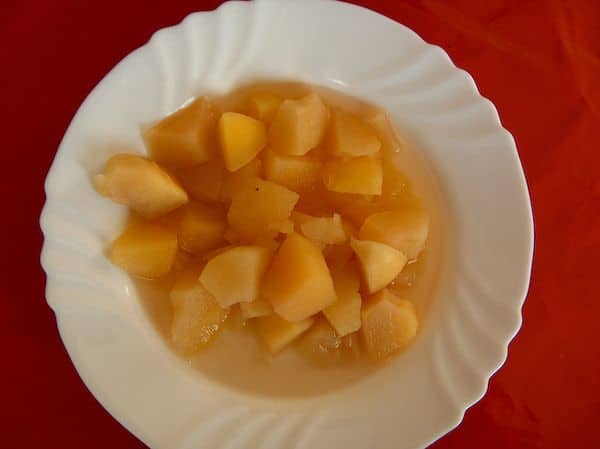Updated: November 25, 2020
Heirloom apples are my favorite. I’m thinking about planting a new tree. I’d like to grow an apple that’s a little out of the ordinary.
But my practical side says what are you going to do with more apples when you already have two trees full. My family eats lots of apples, but come the beginning of September our trees give us all we can handle.
On the other hand, our forefathers couldn’t get enough apples. Thomas Jefferson’s orchard had over 1,000 fruit trees.
The secret that’s been forgotten is that colonial Americans and others at that time planted apples that were bred for more than just eating fresh off the tree.
Let’s take a sec to get the legal words out of the way. This article may contain affiliate links. That means if you click and buy from my partners, I will make a tiny amount of money at no cost to you. This in no way affects my recommendations.
Here are some of the old fashion ways to make good use of specialized, heirloom apples.
Drying heirloom apples
Drying grapes to make raisins is fairly common. But drying apples is not something that people typically consider. Although you do see apple chips increasingly more often in the grocery store.
Drying will extend the shelf life of your apples and make a great treat for adding to trail mix, cereal, cakes or pies. Making dried apple slices is easy using your oven or a Dehydrator. Here’s how to dry apples.
Firmer varieties are best for drying. Heirloom apples like Red Rome, Black Gilliflower, Grimes Golden, Summer Rambo, Wolf River and Winesap make excellent drying apples.

Pies
You can make pies from a variety of common apples, but there are some heirloom varieties that have a reputation as the very best pie apples.
These include Jonathan, Winesap, Cox’s Orange Pippin, and Jonagold. If you really want to up your pie game, go with one of these varieties.
Long-term storage
Ten years ago when I picked the varieties that I planted, I selected them because of their disease resistance.
Little did I know that one of the apples was a storing apple (Enterprise). This means it stores well for two or even three months.
It actually tastes better after a month in cold storage. I thought it was just a poor tasting apple and didn’t know that around the end of November, a month after it was picked, was the best time to eat this dessert apple.
Storing apples are good because you don’t have to eat them at the same time as when all the other apples ripen. You can still be eating apples from your trees three months or more after apple season is over.
Heirloom apples that keep include Arkansas Black, Ben Davis, Roxbury Russet, Shockley, Terry Winter and Yates.
Early harvest
There are apple varieties that ripen in July and early August. Redfree, one of the trees that I planted, ripens at the end of August.
Heirloom varieties that ripen early include Benham, Bevan’s Favorite, Carolina Red June, Early Joe, Horse and Yellow Transparent.
If you have an early harvest apple and a storing apple, then you can really spread out the time when your apples are available.
Applesauce and Apple Butter
Crock pots have made making applesauce and apple butter much easier. Here’s a recipe for apple butter and one for applesauce.
Heirloom apples that work especially well for these recipes include Calville Blanc, Jonathan, King David, Newtown Pippin and Wolf River. My kids really like applesauce for breakfast and an after school snack.
Cider & Vinegar
Once the beverage of choice in the United States, hard cider has become increasingly popular here in the States. But you can still make your own, which also can be turned into apple cider vinegar.
Of course, you might like your hard cider enough that there wouldn’t be any left for vinegar.
Heirloom apples known especially for cider-making include Baldwin, Tolman Sweet, Golden Russet, Grimes Golden and Rhode Island Greening.
Related articles:
Suburban Hobby Farmer is a participant in the Amazon Services LLC Associates Program, an affiliate advertising program designed to provide a means for sites to earn advertising fees by advertising and linking to amazon.com.